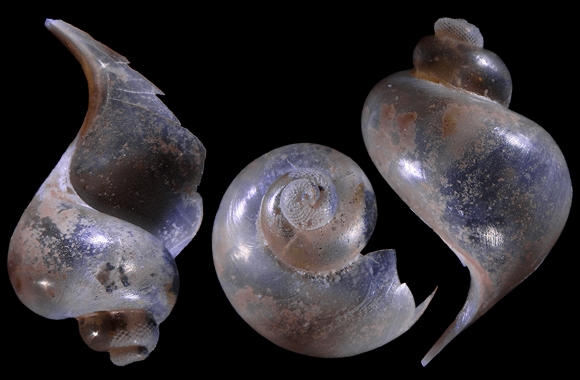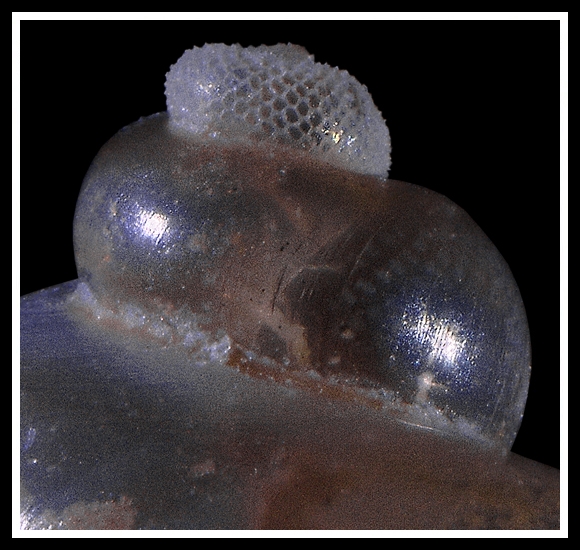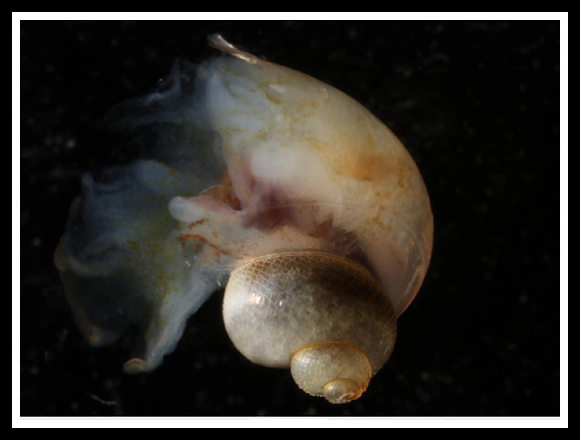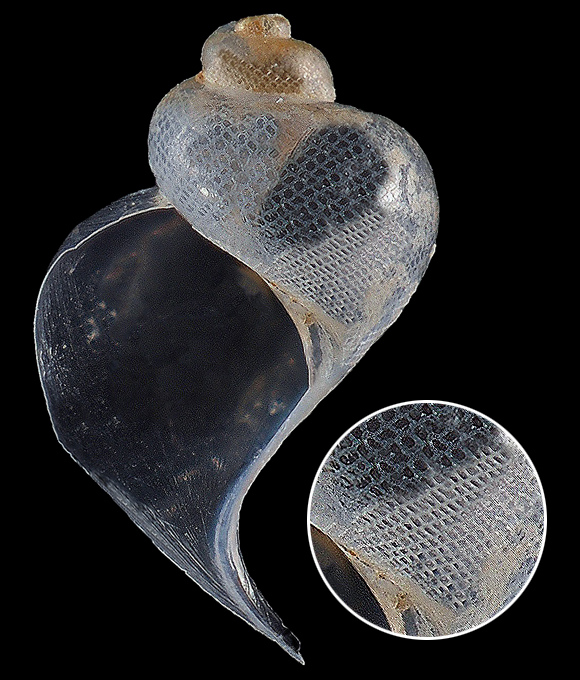
Predator on zooplankton. Original taxon: Atlanta reticulata. Synonyms: clathrata, physoides, recurvirostra…
This is the first species described in this genus; it is therefore not surprising that d’Orbigny chose the epidermis pattern as the distinctive feature. In fact, the shell of reticulata differs from those of the other species by a combination of characteristics: it is more slender than the other species, the rostrum is very developed, the whorls are separated from each other by a less incised suture than in diversa, the spirals are minute and not strong and large as in valdiviae, the last whorl is not adorned with a strong keel as in moluccensis, the microsculpture is very weak… But the lip is, as in the other members of the genus, very often damaged, even in living specimens. – 500m deep, off Murcia, S. Spain. 3mm.


Original picture provided by S. Bush, Smithsonian Institution, NMNH, Invertebrate Zoology, for gbif.org – (CC Ø).
